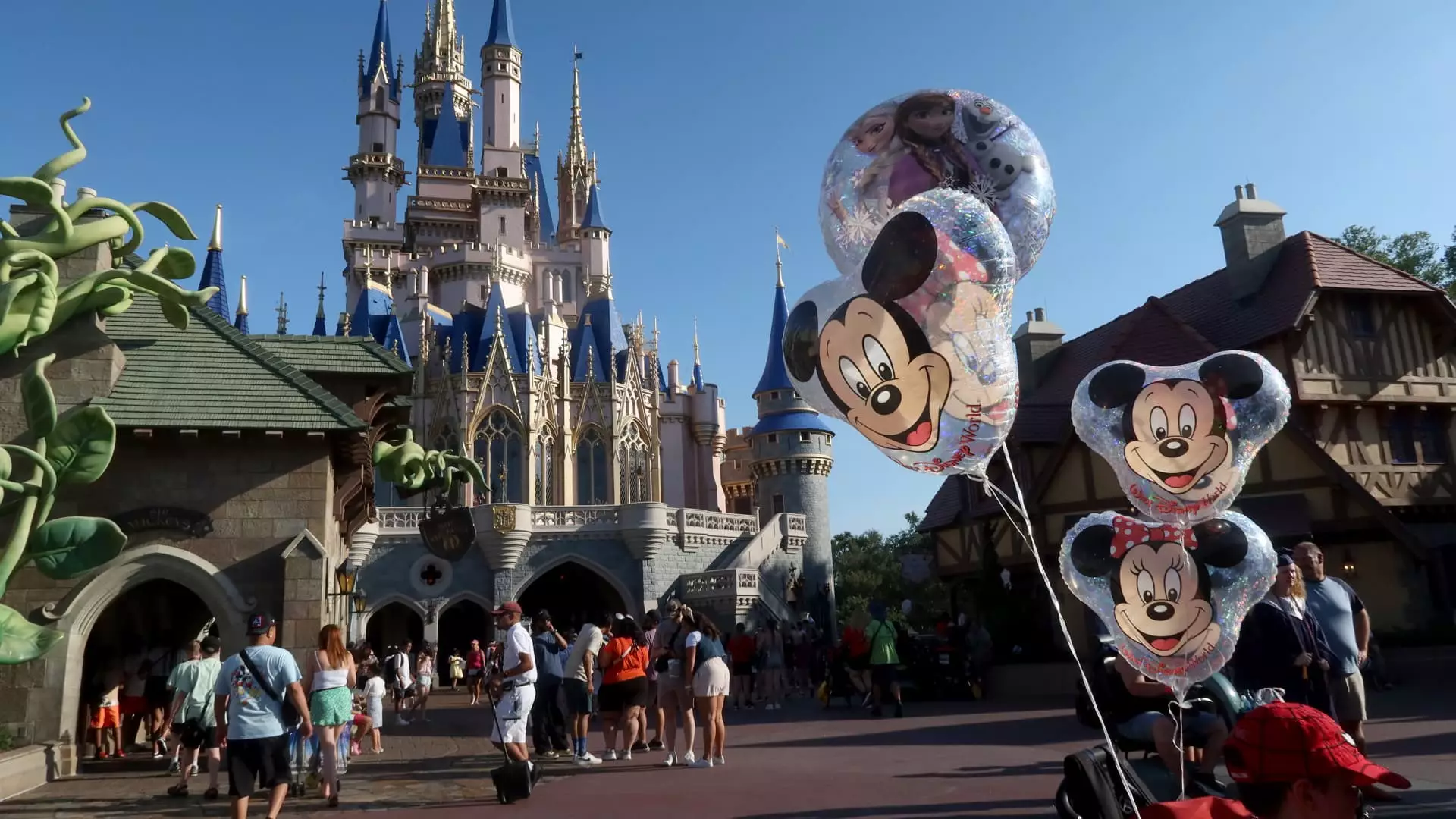As Disney prepares to unveil its fiscal first-quarter earnings report, the eyes of Wall Street are firmly fixed on critical areas of the company’s operations. Scheduled for release before market open on Wednesday, analysts are particularly keen to dissect the performance metrics related to Disney’s streaming services and its theme parks. Recent trends indicate that these sectors are pivotal to Disney’s growth trajectory, and investors are poised for insights that could shape stock performance in the near term.
According to projections from analysts surveyed by LSEG, Disney is expected to announce earnings per share (EPS) of approximately $1.45 and total revenue of around $24.62 billion. These numbers set a definitive benchmark for the company’s performance. The previous earnings report saw Disney’s shares surge, primarily due to impressive growth and profitability in its streaming segment, coupled with a stellar performance at the box office and strategic investment in expanding theme park infrastructure.
The upcoming report will reveal whether Disney can maintain this momentum and allay investor concerns as it approaches a critical transition period.
A significant aspect that adds complexity to Disney’s current landscape is the impending transition in leadership, as CEO Bob Iger is on track to step down in early 2026. The uncertainty surrounding his successor has stirred considerable interest among investors and industry observers. While Iger’s strategic vision has been instrumental in navigating challenges, including the competitive landscape of streaming services, clarity regarding his replacement is crucial. Market participants will be attentive to any commentary during the earnings call that might shed light on the succession plan or the qualities sought in Iger’s eventual successor.
Subscriber growth remains a focal point for Disney, particularly in comparison to its competitors. Netflix recently celebrated a significant milestone, achieving a record addition of 19 million subscribers and surpassing 300 million paid memberships globally. This surge places pressure on Disney to not only sustain its current subscriber base but to also innovate and expand its offerings. The company’s initiatives—ranging from the introduction of ad-supported subscription tiers to cracking down on password sharing—illustrate its attempt to enhance profitability while ensuring customer retention.
As the streaming wars intensify, Disney’s ability to demonstrate growth in subscribers, alongside effective monetization strategies, will likely play a crucial role in maintaining investor confidence.
Looking forward, investors will undoubtedly seek insight into Disney’s strategic direction within its theme parks and digital content endeavors. The integration of technology into theme park experiences, alongside an expanded content library in the streaming domain, will be critical in creating sustainable growth. An emphasis on innovation and customer engagement will likely set the tone for the company’s future performance.
While the upcoming earnings report is set to unveil key financial data, the implications extending beyond numbers will shape investor sentiment. Disney’s performance in streaming, leadership transitions, and the ability to navigate the evolving entertainment landscape will be essential to its ongoing success. As the world of entertainment adapts to new consumer preferences, Disney’s choices in the coming months will be pivotal in defining its market position.

